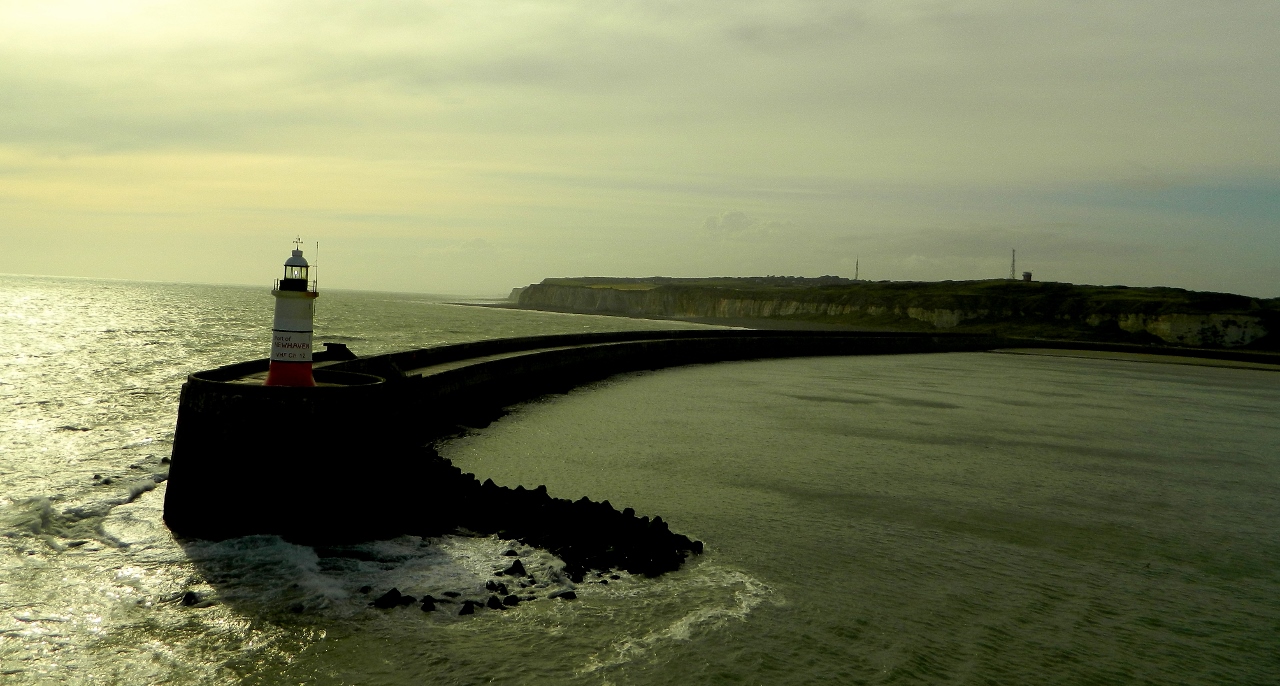The evening crossing from Newhaven was choppy in strong winds around the British coast. Once out in the middle of the channel the winds dropped and the sky at sunset was a striking vermilion pink.

Pulling into Dieppe, half an hour early, we waved at the late night fishermen along the harbour walls and admired again the majestic Norman castle and pretty shoreline illuminated against the darkness.
Being amongst the first vehicles off the boat we seemed to catch the border police off guard, and were waved through and parked up in the harbour side aire whilst the many caravans, motorhomes, cyclists, cars and freight lorries streamed past us on their way to holidays, homes and motorway services.
We’d chosen to drive from Dieppe to our destination, Amsterdam, rather than take the ferry to Dunkirk as that meant facing the M25 and chaos at Dover, widely reported on in recent weeks.
It also meant doing the mileage in France but our drive north and inland was a treat across the wide open farmland of Normandy and the Pays de Bray. The fields were already harvested and hay was stacked in traditional bales, small herds of cattle and sheep grazed contentedly in the sunshine.
At Lens we pitched up at the town’s aire where we had previously sheltered gratefully from a raging gale. At the time workmen had abandoned their job of building the nearby football stadium. In between times of course it had been finished and hosted one of the biggest games in the Euro 2016 tournament, when Wales met England.

Lens is a town with a proud coal mining heritage, their slags heaps have protected national status and its football team, confusingly called Racing Club Lens, has a tradition of fervent working class support.
Along with the gleaming new stadium the town is also home to the new Louvre museum. We wandered around the mind-boggling collection of antiquities and artefacts housed in the purpose-built steel and glass single storey building, chilled by the humming air conditioning which preserves the longevity of the stone, marble, ivory, copper, gold and ceramic treasures.
The collection is arranged from antiquity to the ‘modern’ time of the 18th century in one single cavernous room. We dallied amongst the 5,000 year old gigantic statues, stone reliefs, tablets of hieroglyphs, baffling objects of worship and an army of finger-sized ceramic servants for the ‘afterlife’. Most of the items were dated between 3,000 to 2,000 years BC and sourced from the vanished kingdoms of Mesopotamia, Carthage, the lands of the Phoenicians and Egypt.
The collector of these astonishing pieces was himself the subject of gigantic portraits and statues at the end of the exhibition, towering in Romanesque robes and sporting a crown of laurel, and painted as an army general languidly at rest and accepting the passionate pleas and outstretched hands of the allegorical classical goddess of tempest-tossed revolutionary France.
Outside the street cafes were filling up with RCL supporters heading to the evening’s game, the first of their season. We took our seats in the steep three storey stadium and enjoyed the orchestrated chants and songs of the home fans, impressively led by men with megaphones and microphones teetering on small scaffolds who whipped the crowds into frenzy despite the pretty lack lustre play on the pitch.
After a 2-2 draw against Tours, the singing crowd swung past Bertha and we heard the echoes of the voices of 15,000 RCL supporters replicating the Icelandic football chant in a thrilling end to our first trip day.











